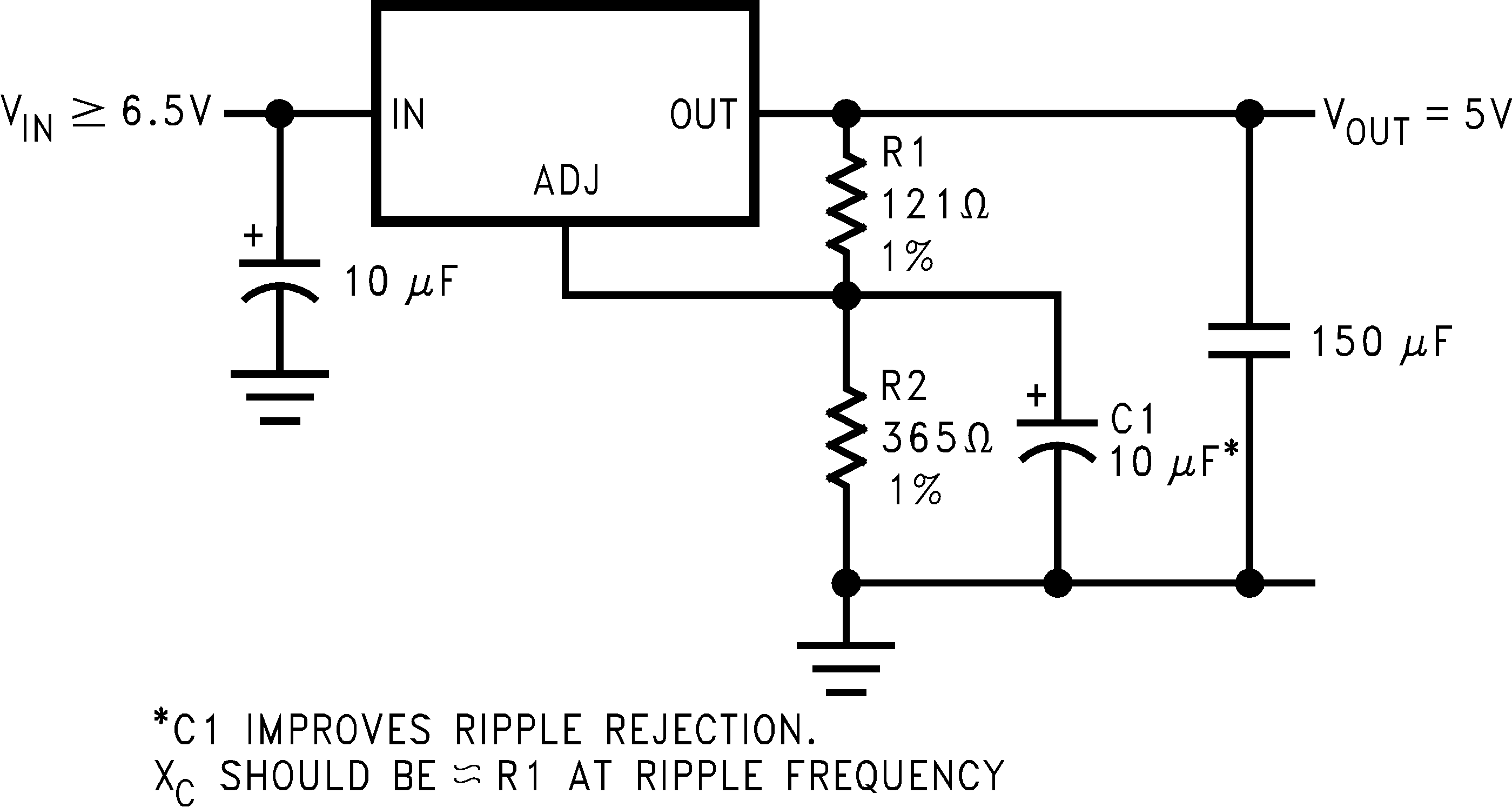JAJS640H September 1999 – March 2024 LM1084
PRODUCTION DATA
- 1
- 1 特長
- 2 アプリケーション
- 3 概要
- 4 Pin Configuration and Functions
- 5 Specifications
- 6 Detailed Description
-
7 Application and Implementation
- 7.1 Application Information
- 7.2
Typical Applications
- 7.2.1 1.2-V to 15-V Adjustable Regulator
- 7.2.2 Adjustable at 5 V
- 7.2.3 5-V Regulator With Shutdown
- 7.2.4 Battery Charger
- 7.2.5 Adjustable Fixed Regulator
- 7.2.6 Regulator with Reference
- 7.2.7 High Current Lamp Driver Protection
- 7.2.8 Battery Backup Regulated Supply
- 7.2.9 Ripple Rejection Enhancement
- 7.2.10 Automatic Light Control
- 7.2.11 Generating Negative Supply Voltage
- 7.2.12 Remote Sensing
- 7.3 Power Supply Recommendations
- 7.4 Layout
- 8 Device and Documentation Support
- 9 Revision History
- 10Mechanical, Packaging, and Orderable Information
パッケージ・オプション
メカニカル・データ(パッケージ|ピン)
サーマルパッド・メカニカル・データ
- KTT|3
発注情報
7.2.9 Ripple Rejection Enhancement
A very simple ripple rejection circuit is shown in Figure 7-9 using the LM1084-ADJ. The capacitor C1 smooths out the ripple on the output by cleaning up the feedback path and preventing excess noise from feeding back into the regulator. Please remember XC1 should be approximately equal to R1 at the ripple frequency.
 Figure 7-9 Ripple Rejection Enhancement
Figure 7-9 Ripple Rejection Enhancement